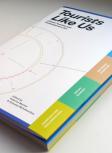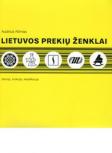
This book opens up a new field of discussion at the crossroads between contemporary art and critical tourism. As common ground for theoretical inquiry and artistic research, the notion of critical tourism asks us to question again our understanding of authenticity, the tourist gaze, the museification of landscape,
the visual construction of place, post-romanticism, contemporary exoticism, site-specificity and global connectedness. The book specifically explores the role of the artist, and of the art institution,
in the age of destination culture. How are individual and institutional practices changing in an era of hosting, hospitality, displacing and cultural nomadism?
Based on the comparison between two very different but nonetheless similar landscapes—the Swiss Alps and the Baltic Dunes and Beaches—art historians, environmental historians, geographers, explorers, curators and artists address the relatively new field of critical tourism in a transdisciplinary context. Together they consider how to critically approach and understand seductive and remote landscapes, against the backdrop of global cultural tourism. The book is not only a critical account of discussions around the topics but it is also rich in visual materials, documents and descriptions of artistic interventions in these two touristic settings.
This publication is the result of over a year of exchanges between ECAV—Ecole Cantonale d’Art du Valais in Sierre (Switzerland) and Nida Art Colony (NAC), which belongs to the Vilnius Academy of Arts (Lithuania). The book reviews the concepts, residencies, exhibitions, workshops and the symposium that formed this exchange between 2012 to 2013, in the context of the research and residency programme “On Hosting and Displacing: Artistic Residencies and Cultural Production in Remote Contexts”.
Release date: 2013
Pages: 264
Format: 17 x 24,5 cm
Covers: paper back
Circulation: 1200
ISBN 978-609-447-107-0
Price: 20,0 Euro
A trademark is a distinctive sign by which one intends to announce oneself to the world and distinguish oneself from others. In most cases a trademark indentifies the business it belongs to, the producer of the product, the provider of the services or simply the sender of the message.
The year 1961 saw the establishment of the Design department, then called the Department of Artistic Construction of Industrial Products, at the Vilnius Academy of Art. Marking this occasion, one of the 2011 issues of Acta Academiae Artium Vilnensis is dedicated to texts on design, which span both Lithuanian and international contexts.
Tel. 8 5 279 10 15 (direkcija)
PVM mokėtojo kodas LT 100003222911
AB bankas „Swedbank“
A.s. LT35 7300 0100 0245 5757








